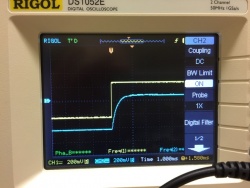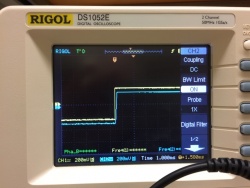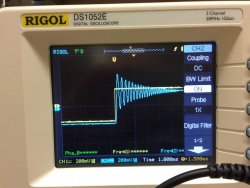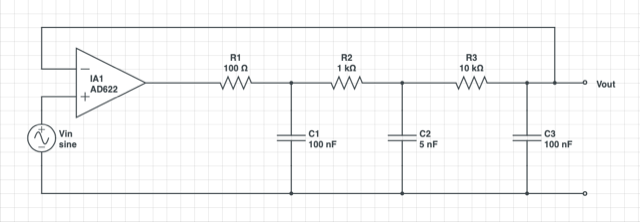Difference between revisions of "Electronics bootcamp II: feedback systems"
From Course Wiki
(→Time and frequency response of a feedback system) |
(→Time and frequency response of a feedback system) |
||
| Line 21: | Line 21: | ||
</center> | </center> | ||
| − | + | # Find the transfer function of just the RC network inside the feedback loop. '''Use an appropriate approximation to dramatically simplify the algebra'''. | |
| + | # Write an expression for the transfer function of the system in feedback as a function of the amplifier gain, G. | ||
# Construct and debug the feedback circuit in the diagram. | # Construct and debug the feedback circuit in the diagram. | ||
# Connect the output of a signal generator to channel 1 of an oscilloscope and also to the input of your circuit. | # Connect the output of a signal generator to channel 1 of an oscilloscope and also to the input of your circuit. | ||
Revision as of 14:55, 28 October 2018
--Steven Wasserman (talk) 21:14, 27 October 2018 (CDT)
Time and frequency response of a feedback system
| Overdamped | Critically damped |
|---|---|

|

|
| Slightly underdamped | Underdamped |

|

|
- Find the transfer function of just the RC network inside the feedback loop. Use an appropriate approximation to dramatically simplify the algebra.
- Write an expression for the transfer function of the system in feedback as a function of the amplifier gain, G.
- Construct and debug the feedback circuit in the diagram.
- Connect the output of a signal generator to channel 1 of an oscilloscope and also to the input of your circuit.
- Connect the output of your circuit to channel 2 of the oscilloscope.
- Set the function generator to produce a 100 Hz, square wave output with an amplitude of 100 mV.
- Adjust Rgain so that the system response is slightly overdamped.
- Measure the frequency response of the system as you did in part 1 of the electronics bootcamp.
- Find the transfer function, the undamped natural frequency, and the damping coefficient.
- Plot the data and transfer function (as you did in part 1)
- Adjust Rgain so that the circuit is critically damped and repeat steps 6-8.
- To ensure that the system is critically damped, turn the potentiometer knob until you see a slight overshoot in the response and then turn it back until the overshoot just disappears.
- Adjust Rgain so that the circuit is slightly underdamped (two or three overshoots) and repeat steps 6-8.
- Adjust Rgain so that the circuit is underdamped with at least a dozen or so overshoots and repeat steps 6-8.

